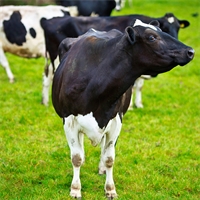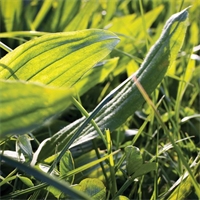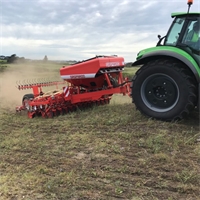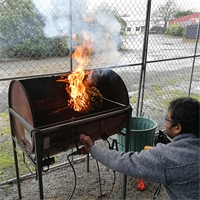12Dec
Dress well this summer
Nitrogen side-dressings encourage a good, strong canopy on summer crops and improve yields.
The amount of light a plant can photosynthesise has a direct effect on yield.
“Most photosynthesis occurs in the leaves, so a healthy, leafy canopy means the plant can capture more light and is more productive,” says Ballance Science Extension Officer Aimee Dawson. “A good canopy also cuts back on weeds and evaporation from the bare soil around the plant, so the plant can use all of the water and nutrients around it.”
Nitrogen is ideal for boosting leafy growth. For best results, side-dressings need to be individually timed for different crops’ high growth periods.
Brassicas
Apply nitrogen at sowing and side-dressing four to six weeks after sowing, when plants are about gumboot height. For leafy turnips, rape and other brassicas which can be grazed more than once, reapply after the first grazing.
Fodder beet
Fodder beets need to develop a strong canopy early on, to provide the plant with energy to grow the bulb. Apply a small amount of nitrogen (usually with starter fertiliser) at sowing. At canopy closure, usually around four to six weeks after sowing, use a single application. Recent research has shown no benefit from late applications of nitrogen on fodder beet yield.
Maize
Apply nitrogen at sowing and once maize reaches knee-height (the six-true leaf stage). This is often around four to six weeks after sowing.
Targeting nitrogen application to high growth periods, rather than later in the season, prevents the crop’s nitrate levels from getting too high, which could result in stock losses or reduced performance.
Getting the most from nitrogen
A bit of groundwork goes a long way in getting the best results from nitrogen. To effectively use nitrogen on your crop, it pays to know your yield, the soil’s nitrogen levels and to properly apply.
Know your yield
Maximises your return on your nitrogen investment by targeting your nitrogen application to your expected yield. Tools such as the AmaizeN calculator (for maize) or the Ballance Brassica Calculator are handy for refining your predicted yield. If you have cut corners during establishment, nitrogen side-dressings won’t help you catch up. When estimating yield, take into account whether the pH or nutrients for the crop at establishment were in the optimum range. Also take into account whether starter fertiliser was used (including boron for brassicas and fodder beet).
Know your soil
Testing to find out how much nitrogen your soil will supply to the crop allows you to work out how much to top-up from the bag. Soil on former pasture land may release quite a bit of nitrogen from built up organic matter when cultivated, whereas land cropped over a number of seasons may have low organic matter reserves. Organic matter mineralizes to mineral nitrogen during cultivation, causing the release of plant available nitrogen. For cereals, a mineral nitrogen or ‘deep N’ soil test to 600 mm can be taken prior to side-dressing to assess the nitrogen that is immediately available to the crop (as nitrate and ammonium). For brassicas and maize, an Available N test, taken to 150 mm, indicates the potential nitrogen that will be released over the growing season.
Apply with water
When applying nitrogen as urea, you need 5 to 10 mm of rain (or irrigated water) within 8 hours to get the nitrogen into the soil. Otherwise it losses occur into the air as ammonia gas (volatilisation). Volatilisation increases when there is low rainfall, high temperatures, high wind speed, high soil pH, bare or open soil or when high application rates are used. Volatilisation can exceed 30% when urea is used for side-dressing crops, mainly due to high application rates and open or bare ground. SustaiN is easy to use as you do not need certain rainfall conditions to apply it. It also supports crop yield by helping to keep nitrogen in the soil for longer.
If you’ve done your groundwork, kept the weeds under control and used the right product but are still not getting the expected response, then use herbage tests to check for trace element deficiencies.
Related

There are number of diseases carried by livestock that can affect humans. These include leptospirosi...
Read More

Farmers looking to reduce their losses to the environment can use a powerful new tool to make it eas...
Read More

Changing milking frequency from twice a day to once a day or going to 16 hours isn’t hard, but it r...
Read More

To mark World Soil Day on 5 December, Ballance Agri-Nutrients Forage Specialist and no-till advocate...
Read More

Research shows that certain types of plants can help protect properties from being destroyed by fire...
Read More

The Hart family have established a successful mixed cropping and lamb finishing operation using biol...
Read More